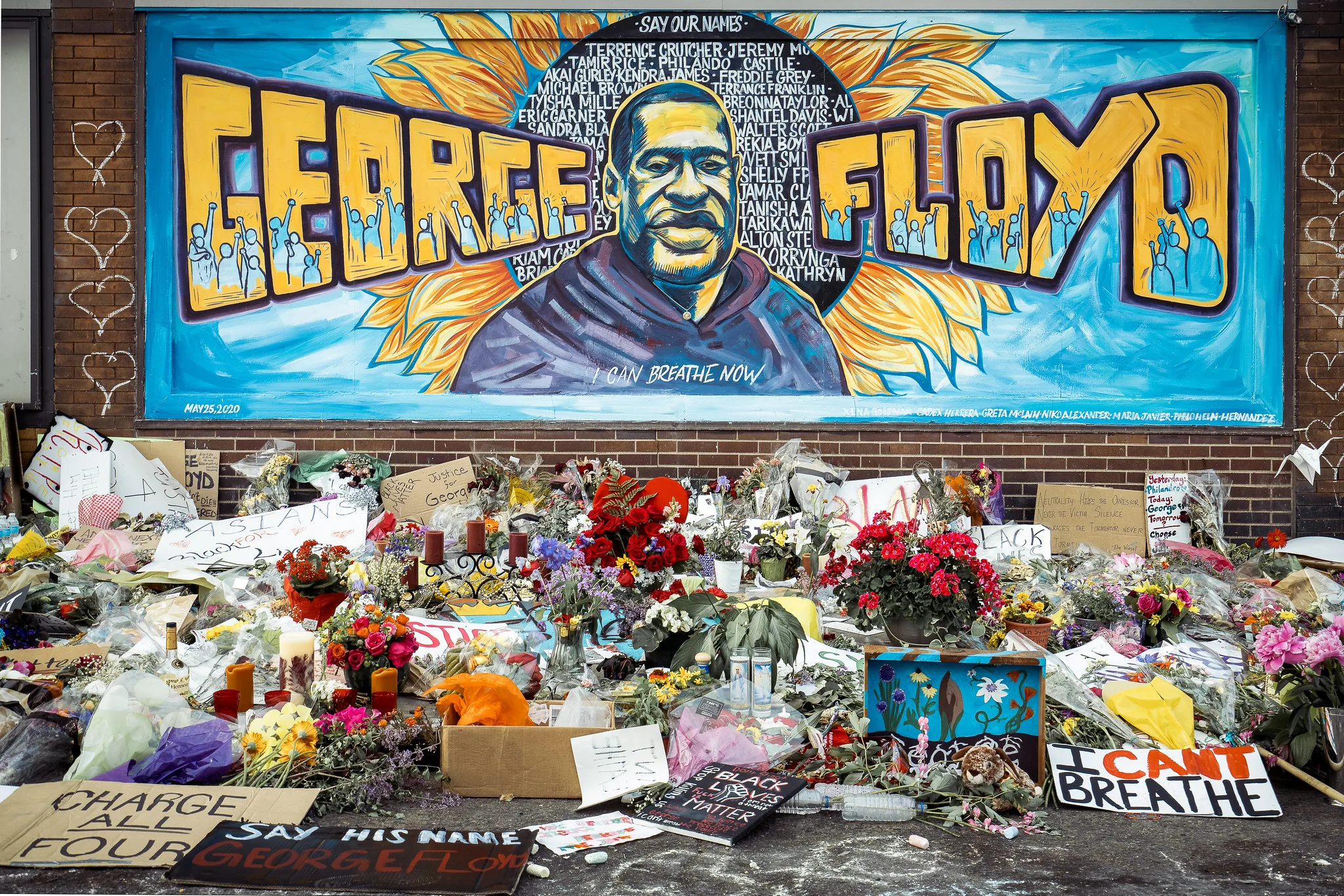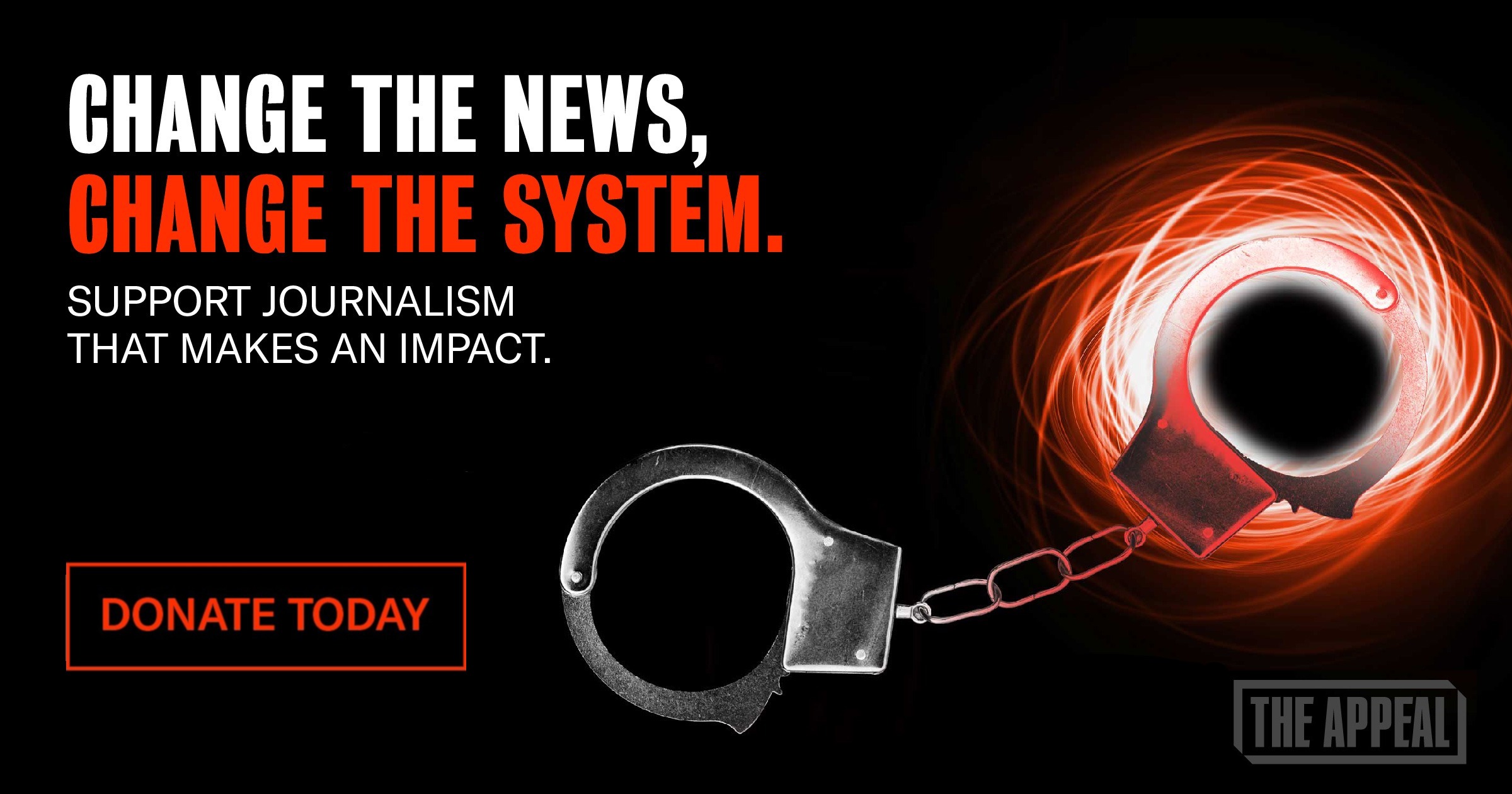Newsletter
His Name is George Floyd: One Man’s Life and the Struggle for Racial Justice
George Floyd’s ancestors were born into slavery. Robert Samuels and Toluse Olorunnipa powerfully document Floyd’s life and lineage.

George Floyd’s great-great-grandfather, Hillery Thomas Stewart, was born into slavery in 1857. Policies enacted to keep white people in power in the beginning of the 20th century kept Stewart’s descendants working on white-owned farms for little pay.
Floyd’s mother, Larcenia Jones, worked on white-owned tobacco farms in North Carolina as a child, wrote Robert Samuels and Toluse Olorunnipa in their Pulitzer Prize-winning book, His Name is George Floyd, which powerfully documents Floyd’s life and lineage.
On the White-owned farms of Goldsboro in the 1950s, members of the Jones clan as young as five years old would traipse through fields at sunrise. They would walk behind a tobacco harvester— a four-legged contraption on wheels that combed through rows of tobacco plants-picking up fallen leaves. When it rained, the juice from the tobacco leaves would drip down their faces, stinging their eyes. But the storm clouds at least offered a brief reprieve from the stifling Carolina sun.
The work started in the predawn hours, with the older Jones children taking the tobacco leaves down from the barn where they had been hanging overnight. Before heading to school, they would lay the leaves on the ground to absorb moisture from the morning dew. Then, they would pack the softened tobacco into a backhouse for additional conditioning before wrapping it in sheets to be warehoused for sale.
When they got home from school, they would often try to drag out their homework to delay an afternoon return to the now-sizzling fields. A collective groan would emerge from their shack when their father would pop his head in to check on their progress.
“You finish your homework yet?” H. B. would say. “Okay, you got five more minutes!”
During afternoon sessions in the field, the Jones family would start the arduous harvesting process from the beginning-picking the leaves by hand off the seemingly endless rows of planted tobacco stalks, looping them in a bunch with string, and then hanging them on a long stick. Their hands moved swiftly and robotically as they repeated the task thousands of times. An adult male worker would take the bunched leaves and suspend them high in the multitiered barn to be air-cured. There, the leaves would hang until they transformed from dark green to golden brown.
During occasional thirty-minute breaks, the Jones children would snack on peanuts, Pepsi, or a honeybun. Then they headed back into the fields to pick up where they had left off. When Laura Ann saw her children starting to get exhausted or frustrated, she would tell them stories about their grandfather or other family members to help pass the time. She would also tell them about her life and how getting pregnant and dropping out of school at fourteen had limited her options and landed her under this broiling sun in her forties. She reminded her thirteen surviving children about her wish to see them all graduate high school, encouraging them to achieve what she never had.
H. B. and Laura Ann sometimes worked out an agreement with the landowners before a harvesting season: if the family worked particularly hard and exceeded an elevated quota by the end of the season, they could own some of the additional tobacco they had picked. They would use the funds from the sale of the extra tobacco to give their children small payouts and rewards-incentives to encourage hard work.
The Jones children would use the money they received from sharecropping to buy clothes for school, a stark contrast to their middle-class peers, who at the time were enjoying Elvis Presley, drive-in movies, and other pleasures of postwar prosperity.
One year in the 1960s, H. B. Jones gathered his kids together to inform them of an especially promising deal he had bargained with the White landowner. To unlock the deal, they would have to produce a massive quantity of tobacco for their employers, he said.
But once they had done so, they could sell as much of the additional tobacco as they could pick and keep all the proceeds for themselves.
The entire family worked overtime that season, with each laborer committed to the vision of achieving their father’s deal. At the end of the season, the hundreds of hours they spent in the fields appeared to have paid off—they had met their quota. The Jones children went to bed that night thinking of all the ways they would spend their modest windfalls.
The next morning, they awoke to the smell of burning wood and tobacco. They looked outside to see what was left of the gabled frame of the tobacco barn engulfed in flames. As the devastated family watched the barn burn to ashes, they thought of all the expenses they had already mentally allocated from their expected bonuses —school costs, unpaid loans, overdue home repairs.
“We had pissed away the whole year,” recalled Selwyn Jones, the youngest of Laura Ann’s children.
He said he was told years later by the landowner’s son that the barn had been insured, contrary to what the man had told the family at the time. The landowner had figured he could profit more from burning his own barn than from allowing his workers to experience one season with extra pocket money.
“He quadrupled his money,” Selwyn Jones said. “He got his money from his tobacco. Then he got the insurance money for that barn of tobacco. And then he had my mama and daddy pay him back for that barn of tobacco for the next five years.”
Despite working harder than they ever had, the Jones family ended that season deeper in arrears. They were trapped in a cycle of backbreaking work and crushing debt, producing ever more wealth while the fruits of their labor seemed to disappear into the rich, dark soil.
Excerpted from the Pulitzer Prize-winning book, His Name is George Floyd: One Man’s Life and the Struggle for Racial Justice, by Robert Samuels and Toluse Olorunnipa.

In the News
Police departments across the U.S. have sold nearly 90,000 guns over the past two decades—more than 50,000 of those guns later turned up at crime scenes. [Chris Hacker, Champe Barton, Stephen Stock, Alain Stephens, Amy Corral, and Nicole Vap / CBS News]
Under Virginia Governor Glenn Youngkin, almost no one is granted parole. An analysis by Bolts and Mother Jones found that only eight out of 628 parole applications were granted so far this year. [Isabela Dias / Bolts and Mother Jones]
In Maryland, Worcester County State’s Attorney Kris Heiser has repeatedly prosecuted people for making complaints about police misconduct. [Ben Conarck / The Baltimore Banner]
Nearly a third of people shot by Los Angeles police officers since 2017 were experiencing a mental health crisis. That number has stayed high despite recent efforts aimed at de-escalation. [Robert Garrova / LAist]
Georgia made mutual aid a crime. The new law expands the cash bail system by making nearly 30 offenses—including protest-related charges—ineligible for bail. [Nia T. Evans / Mother Jones]
